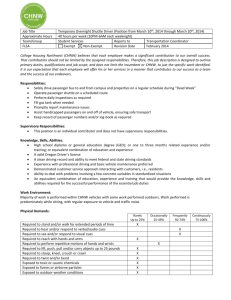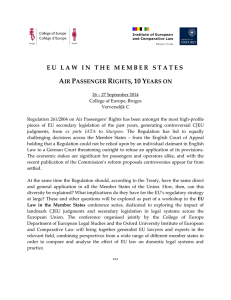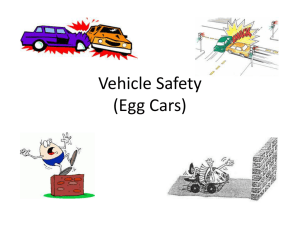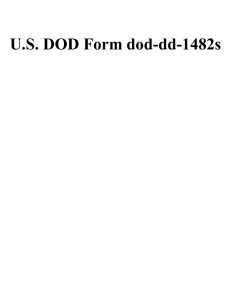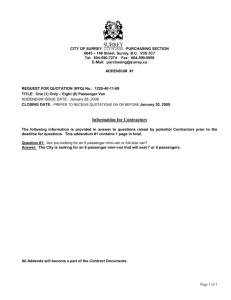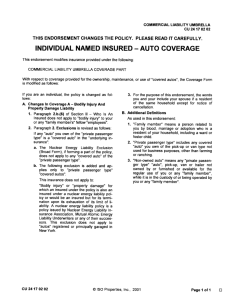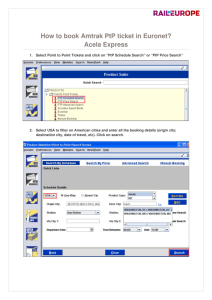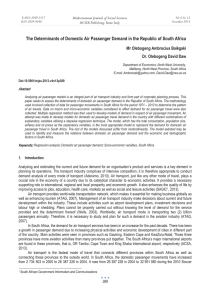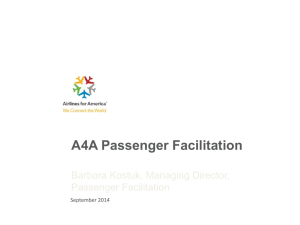IT and Sectoral Transformation in the Automobile World
advertisement
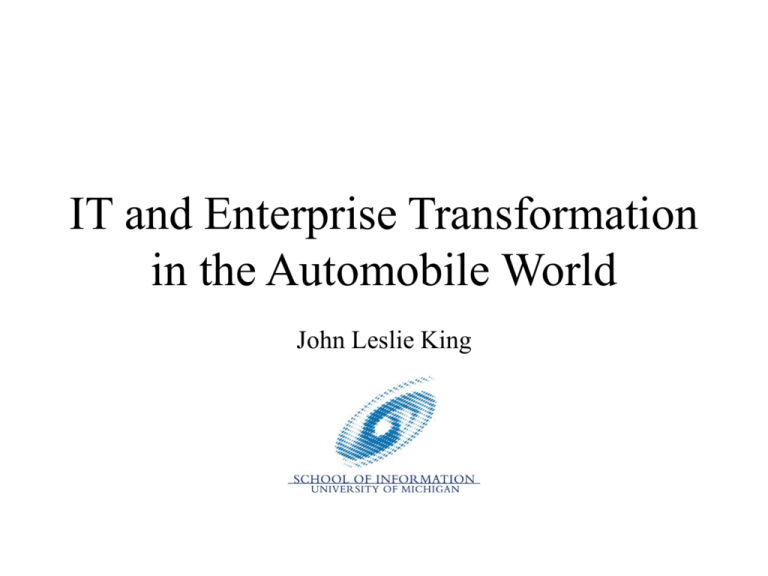
IT and Enterprise Transformation in the Automobile World John Leslie King John Leslie King Vladislav V. Fomin School of Information University of Michigan jlking@umich.edu vvfomin@umich.edu Kalle Lyytinen Sean McGann Weatherhead School Case-Western Reserve Univ. kjl13@po.cwru.edu stm3@weatherhead.cwru.edu Supported in part by a grant from the NSF Digital Society and Technology Program The Industry Today • • • • • • • • • 40 million cars produced globally 550 million cars in use globally 134 million US cars in use in 2001 (24% of global) 5,000 firms, 670,000 workers in US OEM/suppliers: Context New vehicles = 7% of automobiles and decreasing Service is the primary source of profit Complementary components (service, insurance, roads, fuel) much larger than OEM/Supplier base. “Automobile World” is 1/7 jobs in the US economy. >50% of Los Angeles land is for motor vehicles. The Contemporary Focus • “E-business” in the Auto World – Direct sales (e.g., AutoNation, dealers) – Reference (Auto-by-Tel, FordDirect) – Price/product finding (Carpoint, Edmunds) • Supply Chain coordination – Clearinghouse/Auction systems (Covisint) – Vertical sourcing (e.g., proprietary EDI) • Entertainment and Communications – Passenger entertainment (HiFi branding) – Passenger communications (cellphones) – Vehicle location and monitoring (OnStar) A Broader Focus • IT is pervasive and embedded in the automobile world but its greatest effects are largely invisible • IT enables but seldom causes transformation • Focus on two examples: – Atmospheric emissions control – Passenger safety Atmospheric Emissions Control Fuel supply to air Incoming air Exhaust gasses (CO, NoX, CO2, ozone, unburned hydrocarbons) Pre-1972 Post-1978 P T Computer Oxygen sensor Fuel inject/induct Incoming air 3-way catalytic converter Passenger Safety Pre-1978 Post-1978 • • • • • • Polyvinyl acetate laminate safety glass, 1938 Passenger restraint legislation, early 1960’s Nader -- Unsafe at Any Speed, 1965 Consumer Product Safety Commission 1972 Safety features in US auto marketing Pinto liability case, 1978 • Passive passenger restraint efforts – – – – Automatic seat belts Air bags ABS Traction control • Controversies (e.g., air bag deaths) • Smart passive restraint systems • IVHS devices and systems Ecological Shift • Closed-loop emissions control – Manufacturing liability and extended warranty to 5 years/50,000 miles • Passenger safety – Design liability of unlimited duration • The key impact of IT is in record keeping systems – Vehicle/Owner matching and notification for warranty and passenger safety recall – Actuarial analysis in insurance--> legislation--> OEM loop Transformation, Indeed • A combination of forces: – technology, institutions, and the social construction of reality • Ability to link liability throughout unit life cycle to the OEM • Shift in financing patterns (lease, vehicle HMO) • EU regulations regarding residual claimant responsibility for vehicle recycling/disposal • If you cannot escape the liability, why sell the asset? Summary 1960 • Market-coordinated supply chains • Inattention to externalities • Fire-and-forget customer relationship • Product industry 2000 • Partnership-driven supply chains • Internalization of a broad variety of costs • Intimate and protracted customer relationships • Service industry
